Table of contents
Farming is more than just planting seeds—it’s a carefully planned process that transforms soil into food. Whether you’re a student, aspiring farmer, or simply curious about agriculture, understanding the 8 steps of farming with pictures can provide valuable insights into how our food is grown. This guide breaks down each step in simple terms, using real-life examples from India to illustrate the journey from seed to harvest.
1. Land Preparation
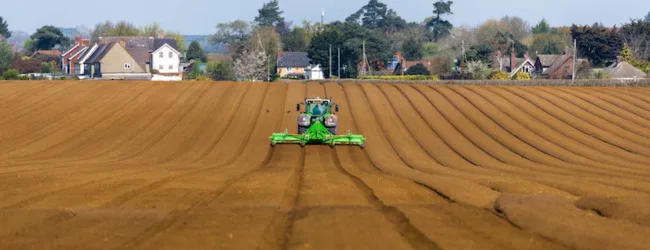
Preparing the soil ensures it’s ready to support healthy crop growth.
Steps:
- Ploughing: Loosening the soil using tools like tractors or ploughs to improve aeration.
- Levelling: Flattening the field to prevent waterlogging and ensure even distribution of nutrients.
- Manuring: Adding organic matter to enrich the soil.
Definition and Purpose: Land preparation means getting the soil ready for sowing by loosening it and removing weeds.
Traditional vs. Modern Methods: Indian farmers use both hand tools and machines like tractors or rotavators.
Soil Testing Before Tilling: Testing the soil helps understand its pH and nutrient needs for better crop planning.
Importance of Proper Drainage: Ensures rainwater doesn’t flood the field and roots get enough oxygen.
Levelling and Clod Breaking: After ploughing, levelling the land ensures uniform sowing and irrigation.
Organic Matter Addition: Farmers often mix compost or cow dung to improve soil health.
2. Seed Selection
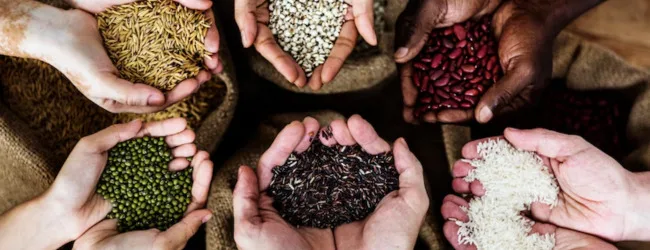
Choosing the right seeds is crucial for a successful harvest.
Considerations:
- Climate Compatibility: Selecting seeds suited to local weather conditions.
- Soil Type: Ensuring seeds match the soil’s characteristics.
- Resistance: Opting for seeds resistant to pests and diseases.
Role in Crop Success: Good seeds grow into strong, high-yielding plants.
Hybrid vs. Local Varieties: Hybrids give higher output; local seeds adapt better to the local climate.
Certified Seed Benefits: Government-certified seeds are disease-free and high in germination rate.
Seed Treatment Basics: Treating seeds with fungicide or neem extract protects against soil-borne diseases.
Matching Seeds to Soil Type: Some seeds need sandy soil, others grow better in loamy or black soil.
Storage Before Sowing: Seeds should be kept in a dry, cool place to avoid moisture damage.
Buying from Trusted Sources: Krishi Vigyan Kendras (KVKs) and seed banks are reliable suppliers.
3. Sowing
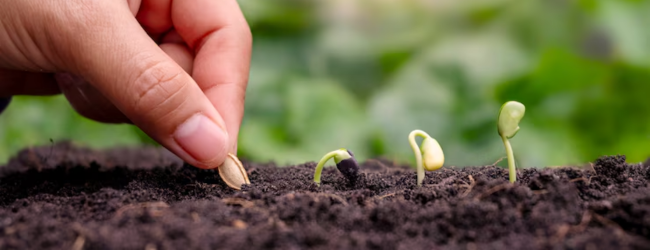
Planting seeds at the right depth and spacing is vital for optimal growth.
Methods:
- Manual Sowing: Using hands or simple tools to plant seeds.
- Mechanical Sowing: Employing seed drills for uniform planting.
Importance of the Right Time: Crops sown in the right season grow faster and give a better yield.
Spacing and Depth Matter: Proper gaps between seeds help roots grow without competition.
Sowing Tools Used: Farmers use hand tools, seed drills, or transplanters based on the crop and area.
Broadcasting vs. Drilling: Broadcasting is quick but uneven; drilling is more precise.
Impact of Soil Moisture: Soil should be moist but not waterlogged during sowing.
Pre-sowing Irrigation: Often, a light watering is done before sowing to ease root establishment.
Germination Check: Many farmers test seeds in water or sand before sowing large batches.
💡 Pro Tip: If you want to start a Business but have too many doubts, connect with a Business expert from Boss Wallah for guidance – Check Out
4. Manuring and Fertilisation
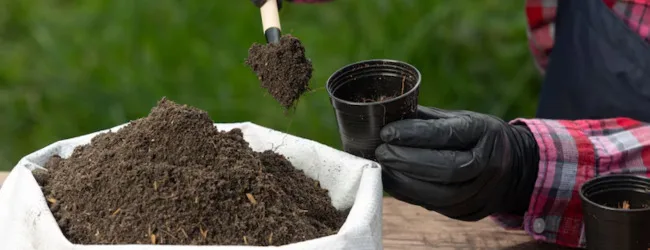
Providing nutrients to the soil enhances crop yield and health.
Types:
- Organic Manure: Compost, green manure, and animal waste.
- Chemical Fertilisers: Nitrogen, phosphorus, and potassium-based fertilisers.
Why Nutrients Are Needed: Healthy soil ensures better plant growth and higher production.
Types of Nutrients: NPK (Nitrogen, Phosphorus, Potassium) are essential for plant development.
Organic Manure Use: Cow dung, compost, and green manure improve soil texture and fertility.
Chemical Fertilisers: These act faster but must be used in the right quantity to avoid damage.
Balanced Fertilisation: Using too much fertiliser can burn crops or harm soil microbes.
Micronutrients in Focus: Elements like zinc, iron, and boron also support plant health.
Fertiliser Application Timing: Split doses—some at sowing, the rest during growth—work best.
5. Irrigation
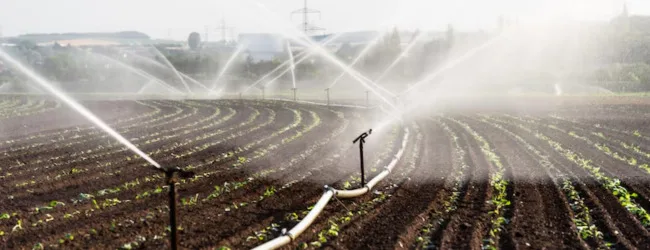
Supplying water to crops is essential, especially in regions with irregular rainfall.
Techniques:
- Drip Irrigation: Delivers water directly to the plant roots, conserving water.
- Sprinkler Systems: Simulates rainfall, suitable for uneven terrains.
- Traditional Methods: Using canals and wells.
Key to Healthy Growth: Without enough water, crops can wither and produce less.
Popular Methods in India: Includes drip, sprinkler, furrow, and flood irrigation, depending on the region.
Choosing the Right Method: Drip saves water for vegetables; flood is common in paddy fields.
Irrigation Timing: Early morning or late evening reduces evaporation losses.
Water Source Types: Borewells, canals, ponds, and rainwater harvesting are commonly used.
Government Irrigation Support: Schemes like PMKSY offer drip system subsidies to small farmers.
Overwatering Risks: It can cause root rot and waterlogging, especially in clayey soil.
6. Weeding and Pest Control
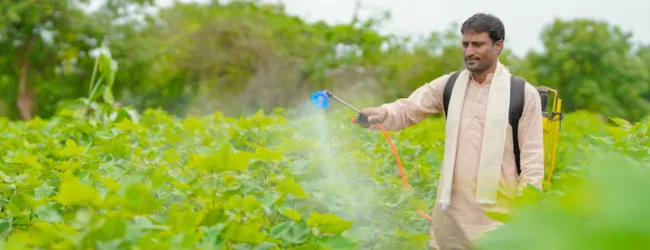
Removing unwanted plants and controlling pests protects crops from damage.
Methods:
- Manual Weeding: Using hands or tools to remove weeds.
- Chemical Control: Applying herbicides and pesticides.
- Biological Control: Introducing natural predators to control pests.
Why Weeds Are Harmful: They steal water, nutrients, and sunlight from main crops.
Weeding Techniques: Manual hoeing, mulching, and herbicide spraying are common.
Pest Control Importance: Pests can destroy entire crops if not managed early.
Chemical vs. Organic Sprays: Neem oil, garlic spray are safer than synthetic pesticides.
Common Pests in Indian Fields: Includes caterpillars, aphids, whiteflies, and locusts.
Crop Rotation Benefit: Changing crops each season helps reduce recurring weed and pest issues.
Weather’s Role in Infestation: Hot and humid conditions often lead to more pest outbreaks.
ALSO READ | Aeroponic Farming: A Complete Guide (2025)
7. Harvesting
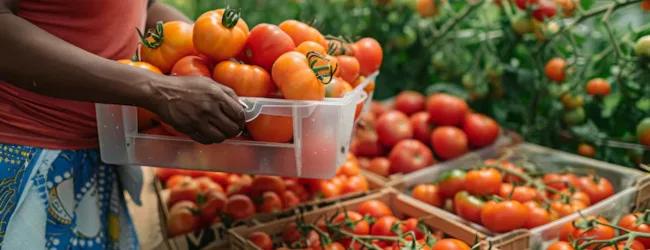
Collecting mature crops at the right time ensures quality and reduces losses.
Methods:
- Manual Harvesting: Using sickles or hands.
- Mechanical Harvesting: Employing harvesters for large-scale operations.
Ideal Harvest Time: Crops should be harvested when grains are mature but before shattering starts.
Manual vs. Machine Harvest: Small farms use sickles; large farms prefer combine harvesters.
Signs of Maturity: Yellowing leaves, dry stems, and firm fruits signal it’s time.
Post-Harvest Handling: Crops are dried, cleaned, and graded before sale.
Avoiding Crop Loss: Delayed harvesting may lead to mould, rot, or grain fall.
Labour Cost and Availability: Labour shortages during peak season can delay harvesting.
Harvesting During Dry Weather: Prevents spoilage and eases storage.
8. Storage and Marketing
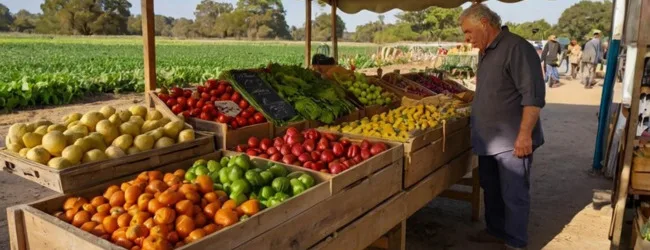
Proper storage prevents post-harvest losses, and effective marketing ensures fair prices.
Storage Techniques:
- Traditional Storage: Using granaries and silos.
- Modern Storage: Cold storage facilities for perishable goods.
Marketing Channels:
- Local Markets: Selling directly to consumers.
- Online Platforms: Utilising websites like Kisan Mandi and Fasal Mandi for broader reach.
Safe Storage Methods: Using jute bags, steel bins, or climate-controlled rooms reduces wastage.
Importance of Drying Before Storage: Wet crops can grow fungus and spoil quickly.
Transport to Market: Tractors, carts, or trucks are used to carry produce to local mandis.
Marketing Channels: APMC yards, farmer groups, online apps like DeHaat, and eNAM help sell directly.
Government Warehouses: FCI and NABARD-supported godowns offer affordable storage.
Cold Storage for Perishables: Vegetables and fruits last longer under controlled temperatures.
Smart Selling Tips: Monitor mandi rates daily and sell in bulk for better price margins.
ALSO READ | Cooperative Farming in India: Definition, Advantages, Techniques & More
Farming Steps Overview
| Step | Activity | Tools/Methods | Indian Context Example |
|---|---|---|---|
| 1 | Land Preparation | Ploughs, tractors | Manuring and Fertilisation |
| 2 | Seed Selection | Certified seeds | Shift to maize in Gadchiroli for drought resistance |
| 3 | Sowing | Manual, seed drills | Mechanised sowing in Karnataka to address labour shortages |
| 4 | Organic manure, fertilisers | Improved irrigation in UPis boosting crop production | Organic initiatives in Kerala‘s wasteland transformation |
| 5 | Irrigation | Drip, sprinkler systems | Subsidised high-tech harvesters in Mandya, Karnataka |
| 6 | Weeding and Pest Control | Manual tools, pesticides | Pest management app developed in Odisha |
| 7 | Harvesting | Sickles, harvesters | Utilisation of Kisan Mandi and Fasal Mandi for sales |
| 8 | Storage and Marketing | Granaries, online platforms | Improved irrigation in UP is boosting crop production |
Need Expert Guidance?
Starting a business can be challenging, but you don’t have to do it alone! At Boss Wallah, our 2,000+ business experts are ready to provide valuable insights and guidance. Whether you need help with marketing, finance, sourcing, or any other area of any business, our business experts are here to help you succeed
Confused about Which Business to Start?
Want to start your own business but unsure which one to choose? Explore Boss Wallah, where you’ll find 500+ courses by successful business owners, featuring practical, step-by-step guides on starting and growing various businesses.
Find your perfect business idea today
Conclusion
Understanding the 8 steps of farming with pictures provides a comprehensive view of the agricultural process. From preparing the land to marketing the produce, each step plays a vital role in ensuring a successful harvest. With advancements in technology and government support, Indian farmers are increasingly adopting modern methods to enhance productivity and sustainability.
Frequently Asked Questions (FAQs)
1. What are the 8 steps of farming?
- Land Preparation, Seed Selection, Sowing, Manuring and Fertilisation, Irrigation, Weeding and Pest Control, Harvesting, Storage and Marketing.
2. Why is land preparation important?
- It improves soil aeration, facilitates root growth, and helps in weed control.
3. How do farmers select the right seeds?
- Based on climate, soil type, and resistance to pests and diseases.
4. What is the difference between organic and chemical fertilisers?
- Organic fertilisers are natural (like compost), while chemical fertilisers are synthetic and provide specific nutrients.
5. How has technology improved irrigation?
- Through methods like drip and sprinkler systems, we can ensure efficient water use.
6. What are common pest control methods?
- Manual removal, chemical pesticides, and biological controls, like introducing natural predators.
7. When is the right time to harvest crops?
- When they reach maturity, indicated by factors like colour change and grain hardness.
8. How do farmers store their produce?
- Using traditional granaries or modern cold storage facilities, depending on the crop type.
9. What platforms help in marketing agricultural produce?
- Online platforms like Kisan Mandi and Fasal Mandi.
10. Why is mechanisation important in farming?
- It increases efficiency, reduces labour dependency, and enhances productivity.


